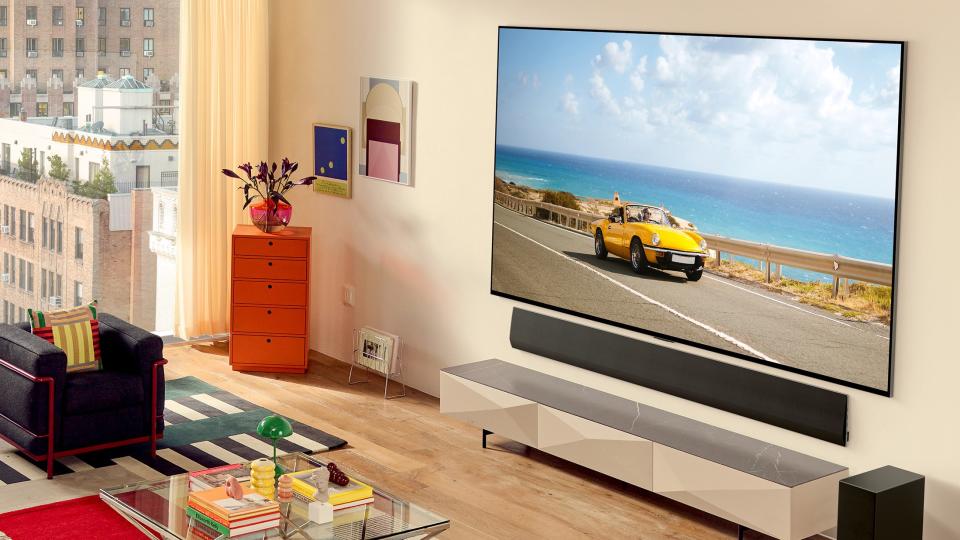We tested the LG C3 OLED — here's the pros and cons

If you’re planning on buying the LG C3 OLED this year, we might be able to save you some money — last year’s LG C2 OLED is nearly identical in terms of measurable performance.
LG played it very cool with this year’s LG C3 OLED and were upfront with journalists at CES by saying that the TV used the same panel as the LG C2 OLED from last year. The changes, they said, would be in harder to quantify areas like upscaling and OS usability.
We had hoped that maybe the LG representatives were just selling the product short. But, after putting the LG C3 OLED through our regular battery of tests, we can now confirm that they were very much telling the truth: On paper, there’s no meaningful performance increase from last year’s LG C2 OLED and this is the data that proves it.
That’s not to say there’s no major upgrade to this year’s C3 — there’s still a new processor and WebOS version on-board. The LG C3 OLED is also strong enough to make our best TVs list. it’s just that performance-wise, it’s not a big upgrade.
LG C3 OLED vs C2 OLED test results
In our LG C3 OLED review, we put LG’s latest model through its paces using an X-Rite i1 Pro spectrophotometer, a SpectraCal VideoForge Pro pattern generator, and Portrait Displays’ Calman calibration software. For more, see how we test TVs at Tom's Guide.
What we saw confirmed what LG told us in our briefing back in January — without a new panel, its metrics are pretty close to its predecessor’s.
Let’s take a look first at the increase in brightness year-over-year. The LG C3 does have a higher brightness when it comes to SDR brightness (237 nits versus 228 on the LG C2), but it only amounts to a measly 3.9% increase between the two models.
It’s a similar story in HDR brightness where we only saw a 3.2% increase from 794 nits on the C2 to 820 nits on the C3. A differential of around 30 nits is noticeable, but it’s not going to help much with the reflectivity issues we saw with the LG C2 OLED.
For HDR brightness we saw only a 3.2% increase from 794 nits on the C2 to 820 nits on the C3.
The biggest positive change for the LG C3 OLED is its new Delta E value of 1.39. The lower the number is, the more accurate the colors are on the screen — and the LG C3 is the most accurate of the C Series we’ve seen yet. Because the panels are the same in both models, this comes down to the difference in the processors.
LG wasn’t lying when it told us that its newer processors are better at color handling than last year’s. (Though, if you own a C2 OLED, don’t worry, both numbers are very competitive.)
It now falls to the LG G3 OLED to move the needle

While the LG C3 OLED’s numbers didn’t really blow us away, we do have high hopes for the LG G3 OLED that uses LG Display’s third generation micro lens array OLED panels. We’ve seen it in action, and it really stole the show back at CES 2023.
We haven’t run our suite of tests on it yet, but according to LG’s data the G3 OLED will be around 70% brighter than previous generation OLED TVs like the LG B2 OLED. That’s a huge improvement and it could allow you to enjoy the OLED in a room with a lot of windows — an area that LG OLED TVs really haven’t excelled in previously.
So what would we see in terms of nits? Well, let’s do some extrapolation using the LG C1 OLED. In its out-of-the-box Standard Mode, the LG C1 OLED achieved a peak brightness of 749.66 nits in a 10% window. With a 70% boost, we can expect the LG G3 OLED to put out around 1274.42 nits in the same window if LG’s percent increase value holds true.
That additional brightness will pair nicely with the LG G Series’ color saturation and color accuracy, both of which are among the best of any TV on the market. To wit, last year’s LG G2 OLED was able to cover 134.44% of the Rec.709 color space with a Delta E score of 1.4891. If the G3’s processor performs on par with the C3’s (and we have no reason to believe it won’t) then that Delta E number will drop to 1.39 or lower.
While the LG C3 OLED hasn’t moved the needle on OLED technology, the G3 could very well carry that torch. If you need something in the meantime, however, don’t be afraid to buy last year’s excellent LG C2 OLED if the difference in color accuracy and smart platform speed of the LG C3 don’t win you over.

